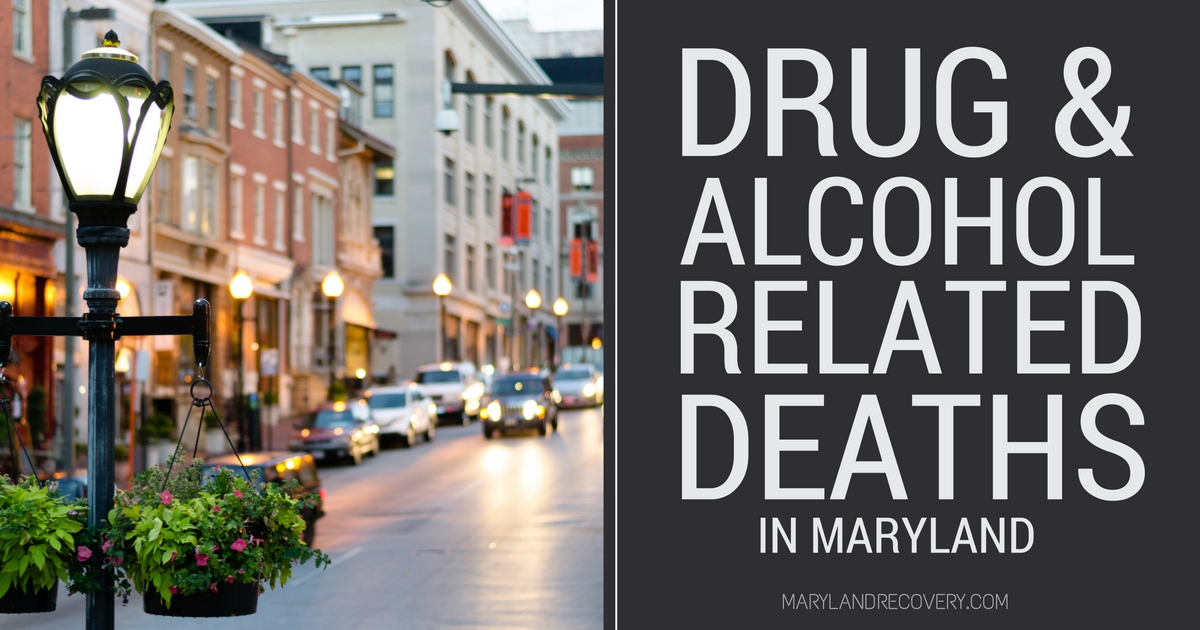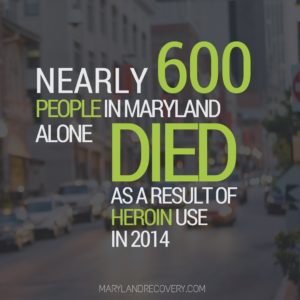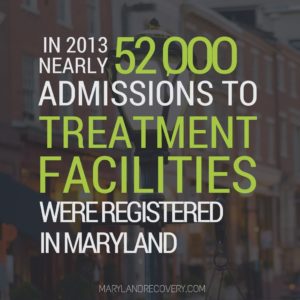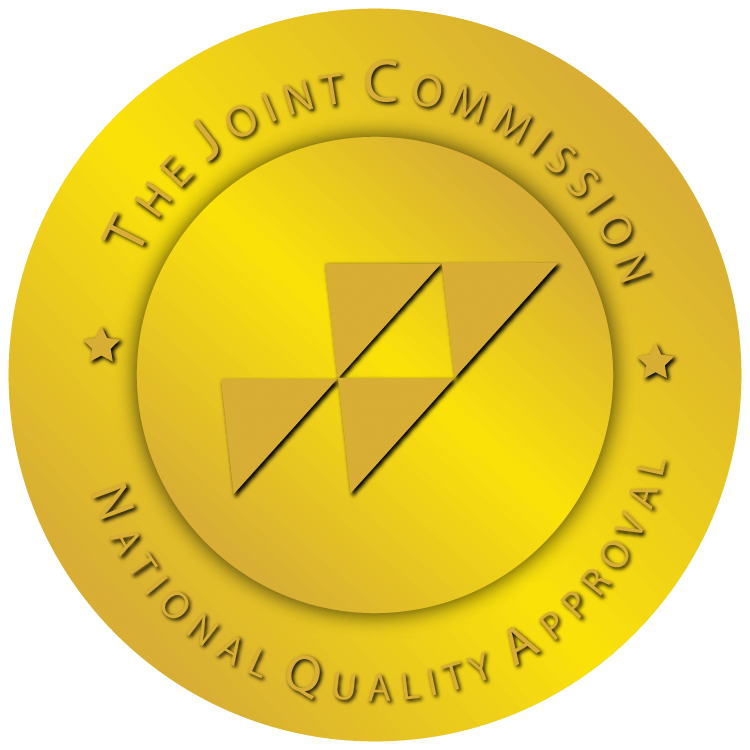 More Americans than ever are turning to the use of drugs and alcohol. Statistics from 2013 revealed that 24.6 million citizens 12 or older had used an illicit drug in the previous month. These growing numbers are more than a little worrisome, and Maryland’s drug and alcohol related deaths are being affected just as much as the rest of the country. The addiction to alcohol and other substances, it seems, has become an epidemic.
More Americans than ever are turning to the use of drugs and alcohol. Statistics from 2013 revealed that 24.6 million citizens 12 or older had used an illicit drug in the previous month. These growing numbers are more than a little worrisome, and Maryland’s drug and alcohol related deaths are being affected just as much as the rest of the country. The addiction to alcohol and other substances, it seems, has become an epidemic.
Many people don’t realize just how costly America’s drug and alcohol problem has become. For prescription drug abuse alone, it’s estimated that the United States loses up to $72 billion per year. Lost productivity, criminal justice costs, treatment, and medical expenses pile up with every case of abuse. Combined with illicit drugs and alcohol, substance abuse is taking quite a toll on our economy.
However damaging the problem is financially, it is much more devastating to the minds and bodies of those who use. A ripple effect also brings emotional harm to their family, friends, and coworkers. Each substance poses different risks, but none of them are menial.
The Physical And Mental Dangers Of Alcohol
Alcohol’s popularity is built on its legality and easy accessibility. In fact, there are more than 40,000 different liquor stores across the nation, selling $45 billion worth of spirits annually. People like to “unwind” with drinks, consuming alcohol everywhere from restaurants to college parties to their living room couches. Along with this temporary feeling of relaxation, however, comes a deluge of negative effects.
There are numerous short-term consequences of alcohol. For example, there are minor symptoms that most people are familiar with and will experience, such as slurred speech and drowsiness. More intense manifestations include breathing difficulties, unconsciousness, anemia, blackouts, and even coma. The most severe of the temporary results, however, pale in comparison to the long-term dangers of continued use.
Liver disease, nerve damage, ulcers, gastritis, heart disease, brain damage, and cancer are examples of why engagement with alcohol is so dangerous. Of course, these conditions are in addition to the unintentional injuries that come with a clouded state of mind. Almost 10,000 people are killed each year in accidents involving the influence of drinks, and thousands more are wounded or crippled.
The Growing Problem Of Prescription Drug Abuse
Despite their noble intent, opioids and other painkillers are taken for the wrong reason all across America. They’re a bit harder to come by, but the implementation of “pain clinics” has helped streamline the process of acquiring them. Prescription drugs pose some universal risks – especially the high chance of addiction.
When abusing these medications, the particular effects vary between drugs. There are some general symptoms, however, that painkillers share in common. Mood swings, poor judgement, altered mental status, increased need of sleep, changes in energy, nausea, and headaches can all signal recent misuse of the drugs.
Over long periods of time, users can experience a barrage of other changes within their bodies and lives. Problems tend to arise in their finances, careers, and academics. They’re also more likely to engage in illegal activities to secure more drugs and please their cravings. Withdrawal can happen quickly and powerfully and cause tremors, vomiting, diarrhea, depression, hallucinations, and more, in addition to the regular altered mental states that the influence presents.
Illicit Drugs To Watch Out For
There’s a long list of drugs designed purely to get people high. Cocaine, crystal meth, ecstasy, PCP, marijuana, and heroin are only a few of the most popular varieties circling our streets. The consequences for using these substances are generally much worse than alcohol or prescription medications, without even accounting for the fact that they’re illegal. The specific physical reactions depend on the drug of choice and can vary from hallucinations, anxiety, and paranoia to heart malfunction and respiratory issues. And that’s just the tip of the iceberg.
Long-term exposure can completely change a person. Facial features and skin conditions can alter and degrade, and changes to one’s mental state (such as irritability and trouble concentrating) remain for months or years. Many people who are addicted to such substances must begin committing crimes to keep up with their cravings and spiral into dangerous dealings for a secure supply.
Maryland’s Notorious Street Killer: Heroin
 Heroin in particular is a nasty drug, and it’s by far the deadliest in Maryland. Nearly 600 people in this state alone died as a result of heroin use in 2014. The strength of the drug is terrifying enough, but it’s also unbelievably addictive. This insatiable need brings more frequent use and more damaging side effects.
Heroin in particular is a nasty drug, and it’s by far the deadliest in Maryland. Nearly 600 people in this state alone died as a result of heroin use in 2014. The strength of the drug is terrifying enough, but it’s also unbelievably addictive. This insatiable need brings more frequent use and more damaging side effects.
Dental health will suffer quickly. The soft tissue of the mouth will become inflamed, and teeth will often rot and fall out. Changes to the skin are also common. A frequent user might experience cold sweats and intense itching. This can lead to picking and pustules on the face and arms as well as infection from the open sores, since immune systems deteriorate with heroin use too.
Respiratory illnesses, muscular weakness, inability to achieve orgasm, depression, loss of appetite, memory problems, and constipation are just a few more of the horrific effects that heroin use leads to. There’s no question that the drug is extremely deadly.
There Is Always Hope For Addicts
As detrimental and terrifying as it can be, addiction isn’t a final sentence. More people are reclaiming their lives by turning to rehabilitation centers like Maryland Recovery. We specialize in offering compassionate and effective care for you or your loved ones. Our system includes a unique combination of inpatient and outpatient services. That means that residents can receive the high-quality care that they need during the day and experience the calm and healing atmosphere of our living quarters for the remainder of their recovery.
 Taking the plunge and admitting to a rehab center can be intimidating, but it doesn’t have to be. Unlike many other options, we treat ALL of the underlying causes of substance abuse. It doesn’t matter if you’ve suffered a traumatic event or you’re dealing with a mental condition like depression. We address the source to help you pull away from damaging lifestyles and beat those harmful decisions.
Taking the plunge and admitting to a rehab center can be intimidating, but it doesn’t have to be. Unlike many other options, we treat ALL of the underlying causes of substance abuse. It doesn’t matter if you’ve suffered a traumatic event or you’re dealing with a mental condition like depression. We address the source to help you pull away from damaging lifestyles and beat those harmful decisions.
More people are choosing this path of hope and renewal. In 2013, nearly 52,000 admissions to treatment facilities were registered here in Maryland. That’s thousands and thousands of second chances at freedom from addiction.
We’re waiting by the phone 24/7 to start your journey to liberation and renewal, it just takes one call. Don’t let addiction put the rest of life on hold for one more minute.
Reviewed by Christopher Schwartfigure MS, LGPC, CAC-AD








